Ninety minutes north of Atlanta is an amazing little hamlet that provides the small mountain town feel so many people crave, but with all the resources that a vibrant community needs. Welcome to Ellijay, Ga., a beautiful area offering homes surrounded by thousands of acres of national forest—in fact, it’s considered one of the largest wilderness areas east of the Mississippi River.
Close to the Tennessee border, Ellijay is wildly popular in the fall as the apple capital of Georgia. Lines of cars stretch down the simple two-lane roads as families eagerly await their turn to pick and enjoy local apples. An added bonus? The stunning pumpkin farms, featuring acres of pumpkins in every size, shape and color known to man. Play your cards right and one of the sunflower mazes might be open as well.
On the north side of Ellijay, the Pinhoti National Recreation Trail spans the Southern Appalachian Mountains between Alabama and Georgia, with a 335-mile-long opportunity to become one with nature. When Chip Wade, Emmy-winning builder and developer based in Atlanta, was searching for land, he backed up to the Pinhoti Trail and started from there. The perfect spot revealed itself to him at the top of a mountain, with never-ending views looking out over Ellijay and the Pinhoti Trail.
“There’s a nuance between getting lost and knowing where you are, and that was the goal of our location search,” Wade says. “We wanted an easily accessible escape from city life, a true natural setting, all the beauty we could handle—and we found it.”
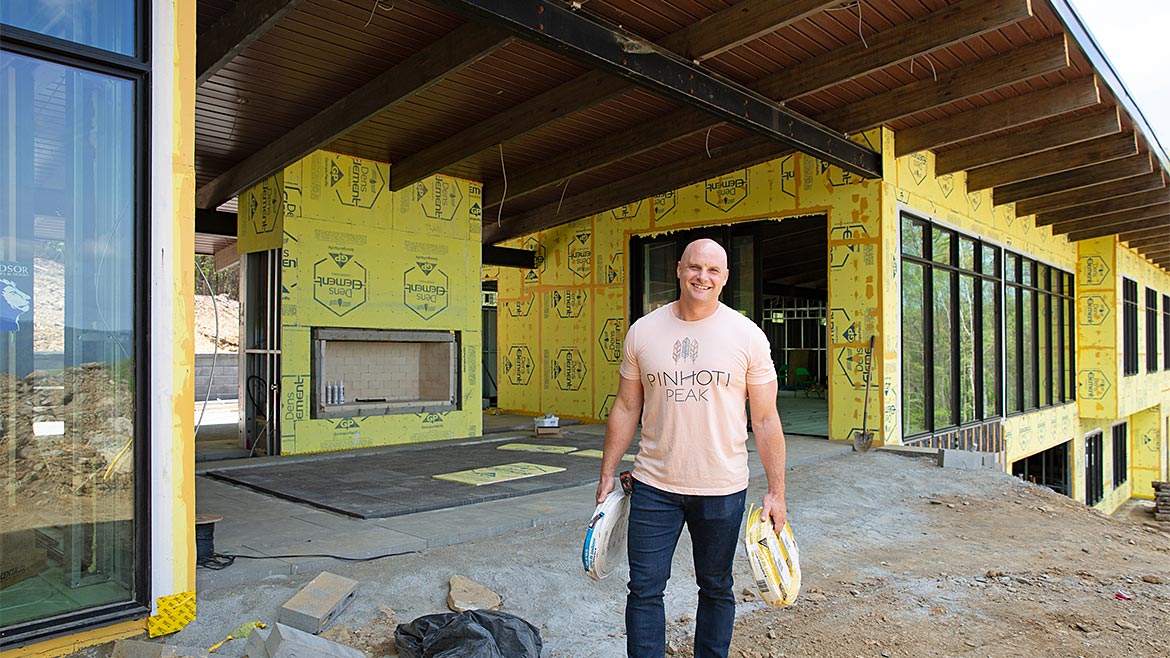
Chip Wade’s Background
Backed by an engineering flair of analytical thought, everything Wade does—to include conception, designing, specifying and quality control—results in beautiful, livable, original, innovative projects.
Wade became a structural engineer and homebuilder, certified for home construction, immediately after earning a dual degree in mechanical and electrical engineering from Georgia Tech. Always wanting to learn more, he also became a licensed home inspector—and then started his own architectural firm.
Shortly thereafter, his TV career began to take off and Wade became part of several HGTV shows, including Designed to Sell, Curb Appeal: The Block, Ellen’s Design Challenge, Elbow Room, Wise Buys, Super Great Rooms and Deal Estate, plus Restaurant Impossible on the Food Network.
Planning the Project
Wade’s ideation of a modern mountain home cradled on the top of a mountain in North Georgia was accompanied by the goal of creating design and architecture inspiration through spotlighting the cream of the crop in building materials, installation methods, top-level product performance and durability, and interior décor. After the perfect physical location had been discovered among the mountaintops, Wade chose the name Pinhoti Peak to honor the trail that divides the property and those who traverse it. Wade’s vision is that the home will become a landmark on the trail, an iconic stopover spot well-stocked with water, snacks and more to accommodate hikers.
The remote location of Pinhoti Peak brought multiple challenges to the table, including navigating the weather. Georgia weather, while traditionally a mild climate, can change in the blink of an eye at higher elevations. Average winter temperatures in Ellijay hover around the low 30s; even lower when you’re on the top of a mountain open to the wind, rain, and sometimes snow and ice. The winter of 2022-2023 landed in the middle of the Pinhoti Peak build schedule, and Wade and his team learned firsthand about how challenging wind, sleet, snow and ice can be on the top of a mountain in the dead of winter. Because of these weather challenges, choosing the right building products was a principal concern.
Wearing the multiple hats of designer/architect/builder/general contractor for the Pinhoti Peak build, all product selection and decision-making stopped at Wade’s feet. When choosing the weather barrier to protect the walls of Pinhoti Peak, he searched for a product that would withstand the heart of winter, the changing temperatures of spring and anything else Mother Nature might throw at it. The perfect product would hold out water and wind-driven rain and stop unwanted air movement (like what would happen when heating the interior of a building without a good air barrier in place). Also at the top of his mind was product reliability and easy installation. Because of these parameters, Wade chose a barrier system to protect the walls of the home and provide a strong building envelope for his family.
“The gift of one building material designed to handle multiple jobs not only made the installation easier, but it also made my job easier,” Wade says. “[The] barrier system was just what we needed to protect the walls of Pinhoti Peak and thoroughly withstand the unexpectedly rough North Georgia winter. The tough weather conditions proved that the barrier system stayed air- and water-tight. The sheathing remained stable once installed—and we wound up with snow and ice six times over the course of the winter.”
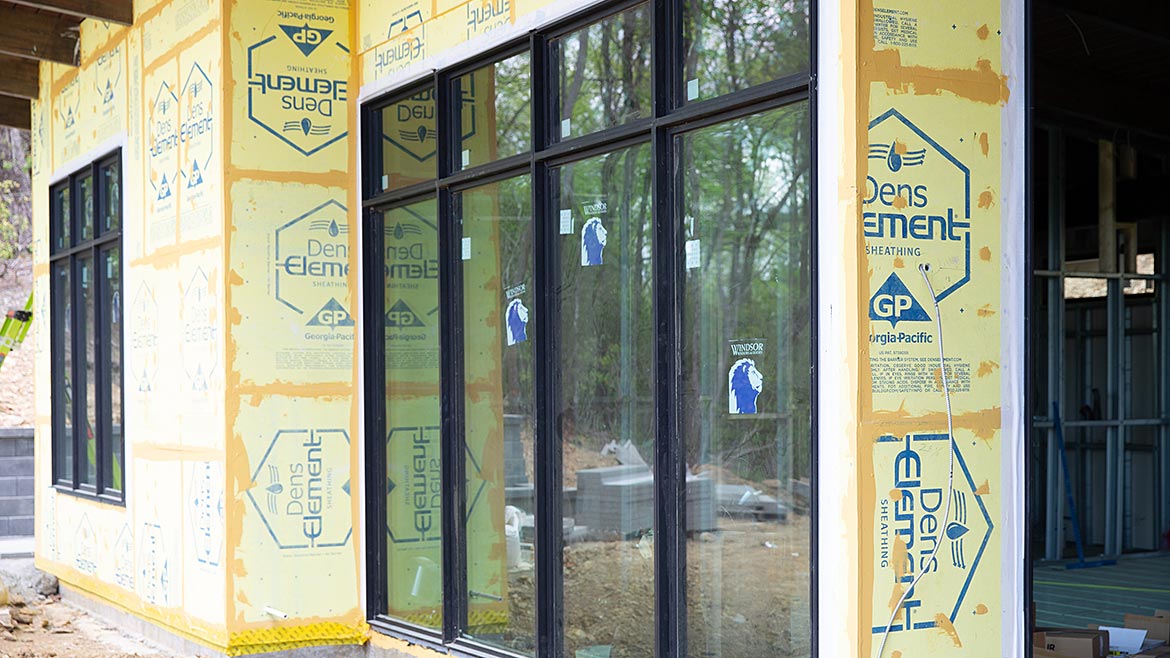
Find the Right Products
Multiple reasons exist as to why Wade chose the barrier system, traditionally a commercial construction product, to cover his home. The primary reason was the performance of the product when it came to reducing weather-related challenges and building delays. Known for protecting the building envelope while achieving faster dry-in, the barrier system was the perfect solution to a structure that would need to weather the winter … literally. Where building wraps can be challenging to install in strong wind conditions and might eventually tear, the system remained strong. The system was also an ideal match with the steel framing he chose to give the heart of the home greater strength and durability.
The barrier system is an integrated WRB/AB gypsum sheathing system that combines efficiency with high performance to help achieve faster dry-in and mitigate installation risks. A water-resistive barrier and air barrier, the product can be installed in all weather conditions for faster job completion. With the combination of design simplicity and weather flexibility, the barrier system is faster to install. The system includes the integrated WRB/AB sheathing panel and a stable of products: liquid flashing, transition membrane and liquid barrier (an option to maintain system continuity, even where gypsum sheathing is not installed). In addition, as a non-combustible, Type X gypsum sheathing, it adds an additional touch of resiliency in an area with the potential for wildfires. For the walls of Pinhoti Peak, Wade chose the sheathing and the liquid flashing to complete the building envelope.
Delivering the barrier system to the site of the Pinhoti Peak build came with its own set of crazy challenges. The house site was located at the peak of a mountain, down a long ungraded dirt road and at the top of a steep, curving, gravel drive—all of which equaled an all-hands-on-deck situation to ensure a safe delivery. Thanks to a strong delivery partner, the sheathing and liquid flashing made it to the site in perfect shape and were easily moved, as needed, around the job site.
Product Installation
How did the installation go? Wade shares that both he and his team were pleased with the easy installation of the sheathing. Both the dimensional stability and the product uniformity remained strong and beautiful once installed on the walls of the home. Proper fastener receiving and proper density of the sheathing resulted in the structural rigidity Wade expected.
The liquid flashing was a revelation to Wade; never having used the new product before, he wasn’t sure what to expect. The result? “It went on every bit, if not more, seamlessly than I would ever have expected,” he says. “The liquid flashing is packaged well, engineered to be resilient and it was incredibly easy to use.” While fluid-applied WRBs need time and heat to cure, liquid flashing can be installed in any weather with no danger of it washing off.
Continuing, Wade comments on the saved time from choosing the integrated weather barrier sheathing system. “Where all of us—both my team and I—noticed a huge difference was in the fact that we were able to dry in the house faster with the barrier system, an incredibly important point when winter weather was bearing down on us,” he says. “The power of the complete system … meant that once the panels were installed and the liquid flashing applied, air movement was reduced immediately. We noticed it ASAP, to be honest, and this resulted in a higher level of energy efficiency across the board for Pinhoti Peak.”
A Partnership that Works
How and why did Wade choose these products for this special build? “Current building practices can be quite complex, which means the more consolidated you can be with your product selection, the better,” he comments. “When products work together and are all under the same brand from the same manufacturer, the job is more efficient, more effective. The manufacturer in this particular case offers an extensive line of easy-to-use and easy-to-install products, many of which were part of the Pinhoti Peak build. Combine this with their historic reputation as an innovator in the modern building materials category, plus their extensive testing to ensure the products work together and perform beyond building code minimums, and there’s a strong level of trust that the products would withstand the kind of demands Pinhoti Peak will generate.”
“We found the manufacturer’s [team] to be helpful, timely and informative throughout the process, which was vitally important to the success of the Pinhoti Peak project,” Wade concluded. “The level of competency and knowledge of products and situations we experienced is irreplaceable.”
For complete information on the Pinhoti Peak project, visit pinhotipeak.com.



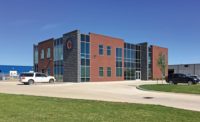
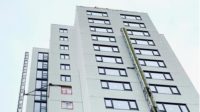
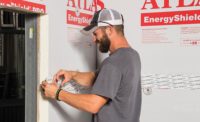
Report Abusive Comment